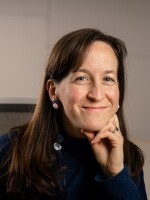Just as Fresno’s downtown and southwest areas are preparing for makeovers, so is its transportation system. The city announced last month that it plans to restructure its bus system for the first time in decades—with public input. But there are bound to be limitations—and some community members are concerned.
Dave Alcanzar lives in central Fresno. He’s in his 70s and in a wheelchair, and he relies on Fresno Area Express, or FAX, to get everywhere.
Today, to go grocery shopping, he’s at Blackstone and Dakota Avenues waiting for the 45 bus, which he just missed. He’ll have to wait about an hour for the next one. But even then, if it arrives with two wheelchairs already on board, he won’t fit, and he’ll have to wait another hour. It’s a problem he’s encountered on many of Fresno’s bus routes. “A couple of weeks ago I had a doctor’s appointment and it was two and a half hours for them to pick me up because the buses were too full,” he says.
On the weekends, Alcanzar would like to go out to dinner or see live music, but the routes he would typically take stop running between 6 and 7 p.m. So he finds himself getting discouraged and taking the bus less and less. “That’s what I do, I get frustrated and I just stay home,” he says.
Riders like Alcanzar have been voicing their concerns about FAX for a long time. Now, with a series of public workshops over the next month, the city claims it’s ready to collect that feedback and incorporate it into a redesign of the whole system. “We are trying to understand what our customers want, both current customers and potential customers, to see if we can bolster ridership,” says Fresno Director of Transportation Jim Schaad.
Since 2010, FAX ridership has fallen by nearly half, and it hasn’t been this low since the late 1990s. If revenue drops too low, the city could lose federal subsidies that support the system. So, Schaad says, FAX needs an overhaul.
Right now, the Manchester Mall at Blackstone and Shields and Courthouse Park in downtown serve as major bus hubs with routes radiating outward. The FAX system has been structured like this since at least the 1970s—even though Fresno’s population has nearly doubled since then. “As the city grew larger, those buses had to travel further distances and it’s become inefficient,” Schaad says.

Earlier this year, Fresno did increase bus frequency along two routes near Fresno State, and in February it’ll unveil its new Bus Rapid Transit line called FAXQ. So-called “Q” buses will run at 10-minute intervals along Blackstone Avenue and Kings Canyon Road.
Elsewhere in the system, though, Schaad says more frequent buses is one of the most common requests he receives, along with more bus lines in general—but because of budget limitations, the city probably can’t do both. “The farther we stretch our resources to get to more locations, the more difficult it is to serve customers in our core service and get them to their locations faster,” he says.
These limitations leave Grecia Elenes with the Leadership Counsel for Justice and Accountability concerned about equitability. She works with residents in west and southwest Fresno—two communities served by relatively few bus lines. She worries the city will favor the denser parts of the city over more disadvantaged areas. “I think that would be worst case scenario where these folks won’t be able to get access to healthy foods, get access to Fresno City College or Fresno State or anything like that,” she says.
Elenes agrees that getting big, 40-foot buses out to all these neighborhoods every 15 minutes would be difficult and expensive—which is why planners should be thinking beyond typical transit buses and routes.
“There are express buses,” she says. “There are car share companies and programs that are out there, there are all these solutions that other cities have provided that are increasing the ridership and getting the residents and the commuters to their destinations.”
Genoveva Islas is program director of the health advocacy non-profit Cultiva La Salud. She argues: For Fresno’s most disadvantaged residents, access to reliable public transportation could radically change quality of life. “Transportation is literally pathways out of people’s poverty,” she says. “People need good systems to get educated, they need good systems to have employment.”
At Blackstone and Dakota, Dave Alcanzar reminisces about San Jose, where he used to live. He loved the Bay Area’s connectivity—which he says is lacking here. Still, though, he says Fresno’s system does have one important thing going for it: “The drivers are nice,” he says, laughing.
The city is hosting four more FAX workshops this week and a final one in early December.




